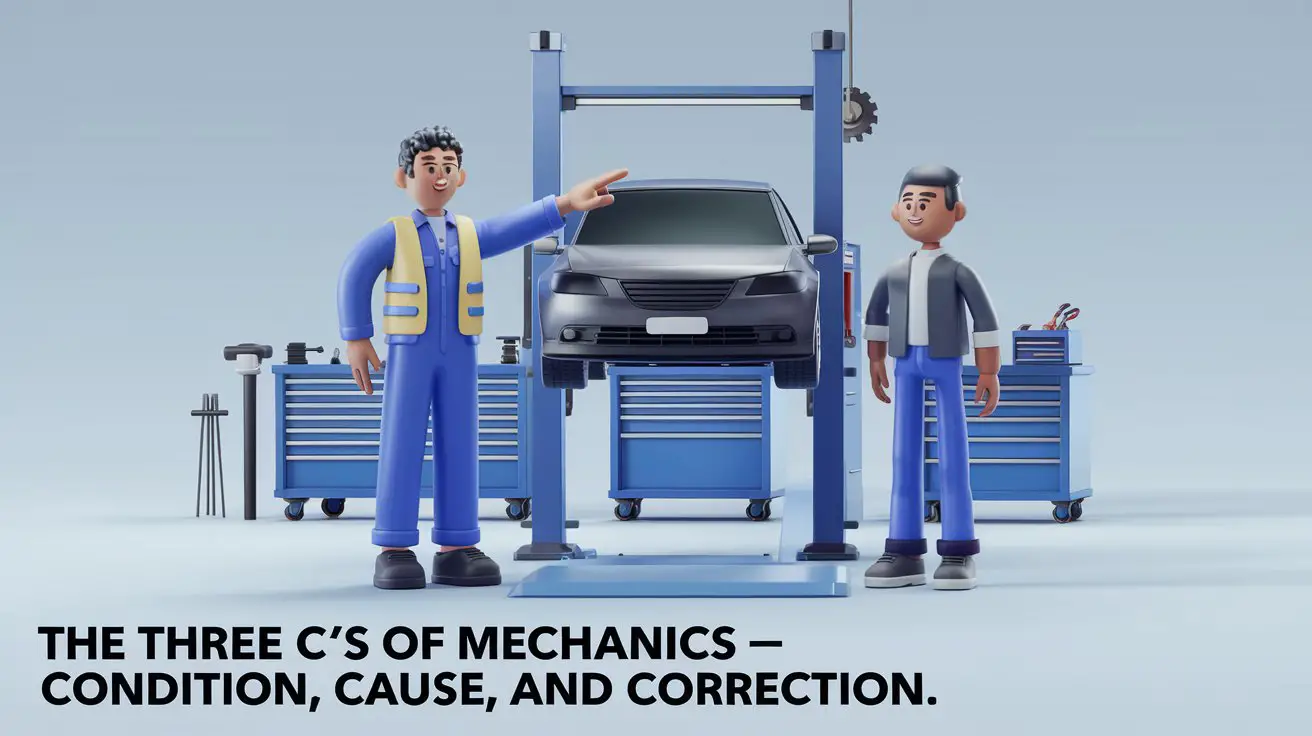a must-watch video from S&E’s Garage
That mysterious clinking sound under your hood?
Most car owners are unaware that your mechanic’s diagnostic approach often determines the difference between a $100 fix and a $1,000 headache.
In an industry where trust is just as valuable as technical skills, finding a reliable mechanic can be a challenging task.
The three C’s of mechanics—condition, cause, and correction—form the foundation of effective vehicle diagnostics and repairs.
These aren’t just fancy words. They’re the exact principles that separate real problem-solvers from parts-swappers who guess their way through repairs.
Want to know why some people never worry about getting overcharged at the shop? They understand these three C’s.
You see, master technicians don’t just fix what’s broken—they follow a systematic approach that:
- Identifies the true condition (not just the symptoms)
- Tracks down the real cause (not just guesses)
- Implements the correct correction (not just temporary fixes)
Let’s walk through what this means for your wallet—and your peace of mind.
Contents
Understanding Each C: Let’s Break This Down
Have you ever wondered why certain mechanics possess a deep understanding of cars? They’ve mastered these three C’s.
Let’s see what each one really means for your car—and your wallet.
Condition: The What’s-Wrong-Right-Now Phase
Think of condition as your car’s current state of health. But here’s what most people get wrong: condition isn’t just about that weird noise or the check engine light.
A real pro looks at:
- Current symptoms (yeah, that clunking noise)
- Vehicle history (what’s been fixed before?)
- Related systems (because cars are complex machines)
- Service records (maintenance tells a story)
Here’s something interesting: About 70% of misdiagnosed car problems come from mechanics who rush through this first C. They hear a noise, make a guess, and start replacing parts.
Sound familiar?
Cause: The Why-It’s-Happening Detective Work
Here’s where things get interesting—and where your money either gets saved or wasted.
Let’s say your car’s overheating. A parts-swapper might just replace the thermostat.
But a mechanic who understands the second C will:
- Test the cooling system pressure.
- Check for leaks
- Examine the water pump.
- Look at the head gasket
- check the fan
- check water level
- check the radiator cap
Why? Because the same condition (overheating) can have multiple causes. And here’s the kicker: fix the wrong cause, and you’ll be back in the shop next week.
Correction: The Fix-It-Right-First-Time Step
We have now reached the stage of financial planning. Correction isn’t just about fixing what’s broken—it’s about fixing it right.
Want to know what sets great mechanics apart?
They:
- Document every step of the repair.
- Use quality parts (not just the cheapest option).
- Test thoroughly after repairs.
- Explain exactly what they did and why.

Finding Your Three-C Mechanic
Here’s the truth: not every mechanic follows these principles. But finding one who does isn’t as hard as you might think.
Start with research. But don’t just Google “mechanics near me.” Instead:
- Check specialized review sites like RepairPal.
- Look for shops with ASE-certified technicians.
- Ask about their diagnostic process.
- Watch how they explain problems.
- ask a friend
Pro tip: A good mechanic will walk you through all three C’s without you even asking.
The Certification Factor
Here’s something most car owners don’t know: ASE certification isn’t a fancy certificate on the wall.
It means your mechanic has:
- Passed rigorous testing
- Proven real-world experience
- Committed to ongoing education
The Communication Test
Want to spot a three-C mechanic instantly? Ask them to explain what’s wrong with your car.
They should:
- Break down the condition clearly.
- Explain their diagnostic process.
- Outline correction options
- Discuss costs upfront.
Red flag? Avoid any mechanic who skips straight to “You need a new [expensive part]” without explaining why.
Bottom Line
Understanding the three C’s isn’t about avoiding bad repairs—it’s about finding a mechanic who’ll keep your car running right for years to come.
Remember: Condition tells you what’s wrong, cause tells you why, and correction makes it right. Find a mechanic who respects all three, and you’ll never worry about car repairs.
Hope this helps you.
How do the three C’s help in finding a reliable mechanic?
When searching for a trustworthy mechanic, understanding the Three C’s can guide you in evaluating their service. Look for mechanics who demonstrate confidence in addressing your concerns, thoroughly investigate the cause of any issues, and provide clear solutions for correction. This methodical approach not only ensures that repairs are done correctly but also builds trust between you and your mechanic.
How can I verify if a mechanic is following the Three C’s?
To verify if a mechanic is following the Three C’s, assess their communication by ensuring they actively listen to your Concern, thoroughly investigate the Cause, and provide a clear plan for Correction. Additionally, observe their transparency in explaining each step of the process and conducting follow-up tests to confirm that the issue has been resolved.
Can I request a detailed explanation of the Three C’s from my mechanic?
Yes, you can request a detailed explanation of the Three C’s from your mechanic, as it demonstrates your interest in understanding the repair process. By asking them to clarify how they address your Concern, identify the Cause, and implement the Correction, you can foster better communication and trust in their services.




Leave a Reply